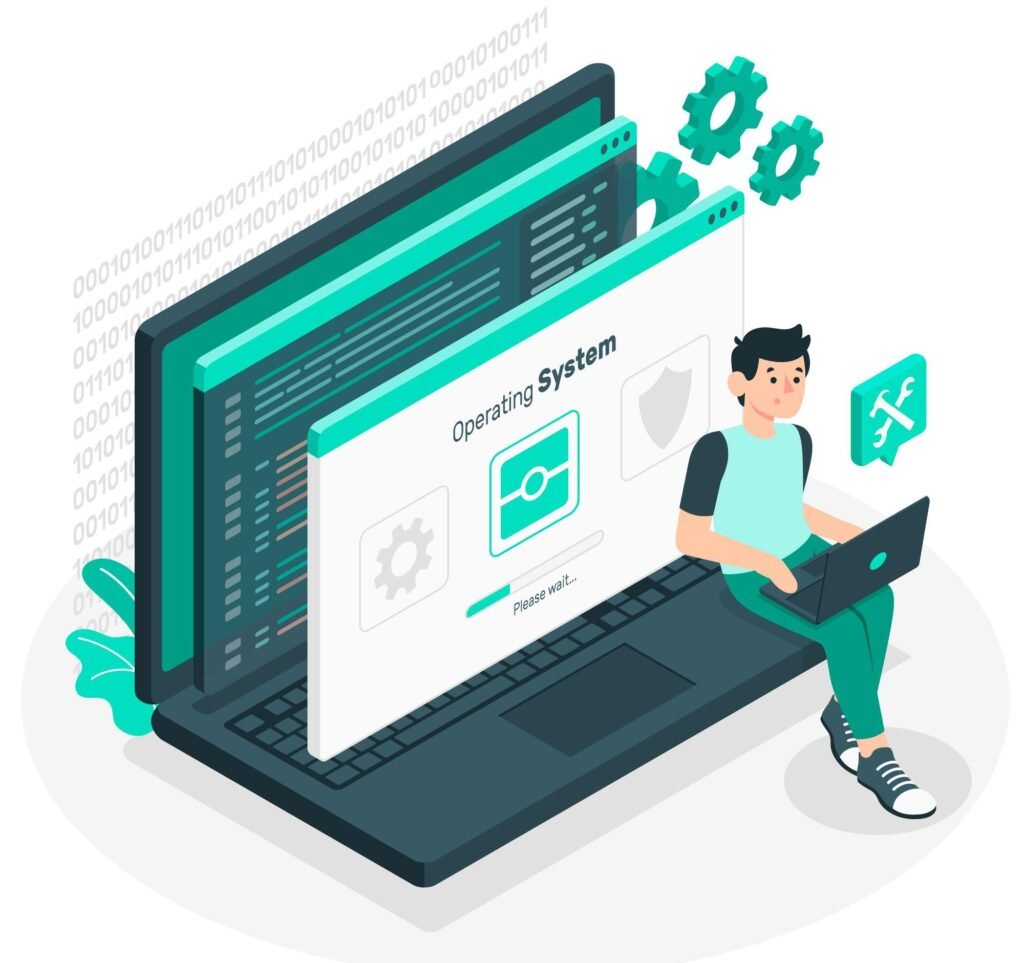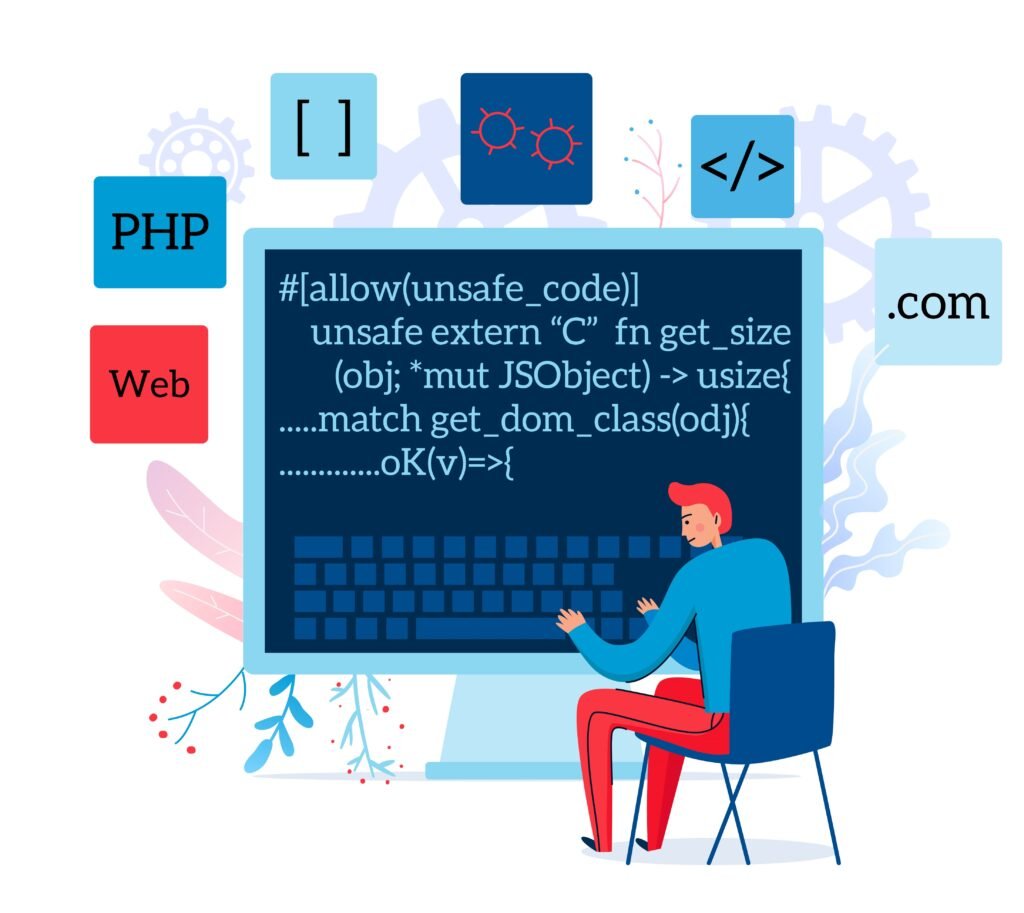Linux is another operating system that is an open-source working system (OS). A working system is a software program that at once manages a system’s hardware and assets, like CPU, memory, and storage. The OS sits among packages and hardware and makes the connections among all your software program and the bodily assets that do the work.

Linux changed into created in 1991 through Linus Torvalds, a then-scholar at the University of Helsinki. Torvalds constructed Linux as a loose and open supply opportunity to Minix, any other Unix clone that changed into predominantly utilized in instructional settings. He firstly meant to call it “Freax,” however the administrator of the server Torvalds used to distribute the unique code-named his directory “Linux” after an aggregate of Torvalds’ first call and the phrase Unix, and the call stuck.
Linux
Just like Windows, iOS, and Mac OS, Linux is a working machine. In fact, one of the maximum famous structures on the planet, Android, is powered with the aid of using the Linux working machine. A working machine is a software program that manages all the hardware assets related to your computer or laptop. To position it surely, the operating machine manages the verbal exchange between your software program and your hardware. Without the working machine (OS), the software program wouldn’t function.
The Linux working machine contains numerous exceptional pieces:
- Bootloader – The software program that manages the boot procedure of your computer. For maximum customers, this may surely be a dash display screen that pops up and finally goes away into the working machine.
- Kernel – This is the only piece of the complete this is in reality called ‘Linux’. The kernel is the center of the machine and manages the CPU, memory, and peripheral devices. The kernel is the bottom stage of the OS.
- Init machine – This is a sub-machine that bootstraps the person area and is charged with controlling daemons. One of the maxima broadly used init structures is a system, which additionally takes place to be one of the maximum controversial. It is the init machine that manages the boot procedure, as soon as the preliminary booting is exceeded over from the bootloader (i.e., GRUB or GRand Unified Bootloader).
- Daemons – These are historical past services (printing, sound, scheduling, etc.) that both begin up at some point of boot or when you log into the computer.
- Graphical server – This is the sub-machine that presents the photos for your monitor. It is generally known as the X server or simply X.
- Desktop surroundings – This is the piece that the customers in reality have interaction with. There are many computer environments to pick from (GNOME, Cinnamon, Mate, Pantheon, Enlightenment, KDE, Xfce, etc.). Each computer’s surroundings consist of integrated applications (including record managers, configuration gear, net browsers, and games).
- Applications – Desktop environments now no longer provide the total array of apps. Just like Windows and macOS, Linux gives heaps upon heaps of superb software program titles that may be without difficulty observed and installed. Most present-day Linux distributions (more significant in this below) encompass App Store-like gear that centralizes and simplifies software installation. For example, Ubuntu Linux has the Ubuntu Software Center (a rebrand of GNOME Software) which lets you speedy seek most of the heaps of apps and defloration them from one centralized location.

how does Linux work?
Linux turned into designed to be just like UNIX, however, has advanced to run on a huge sort of hardware from telephones to supercomputers. Every Linux-primarily based totally OS includes the Linux kernel—which manages hardware resources—and a fixed of software program programs that make up the relaxation of the running system.
The OS consists of a few not common center components, like the GNU equipment, amongst others. This equipment provides the person with a manner to control the resources supplied via way of means of the kernel, defloration extra software program, configure overall performance and safety settings, and more. All of those pieces of equipment bundled collectively make up the useful running system. Because Linux is an open supply OS, mixtures of software programs can range among Linux distributions.
Open Source
Linux is likewise dispensed under an open supply license. Open supply follows those key tenets:
- The freedom to run this system, for any purpose.
- The freedom to have a look at how this system works and extrude it to make it do what you wish.
- The freedom to redistribute copies so that you can assist your neighbor.
- The freedom to distribute copies of your changed variations to others.
- These factors are vital to informing the network that works collectively to create the Linux platform. Without a doubt, Linux is a running gadget that is “with the aid of using the human beings, for the human beings”. These tenets also are a primary thing in why many human beings pick out Linux. It’s approximately freedom and freedom of use and freedom of choice.
What is a distribution?
Linux has some extraordinary variations to fit any kind of consumer. From new customers to hard-center customers, you’ll locate a “flavor” of Linux to suit your needs. These variations are referred to as distributions (or, withinside the brief form, “distros”). Nearly every distribution of Linux may be downloaded for free, burned onto disk (or USB thumb drive), and installed (on as many machines as you like).
Popular Linux distributions consist of LINUX MINT, MANJARO, DEBIAN, UBUNTU, ANTERGOS, SOLUS, FEDORA, ELEMENTARY OS, OpenSUSE
Each distribution has an extraordinary take on the computing device. Some choose very present-day consumer interfaces (inclusive of GNOME and Elementary OS’s Pantheon), while others stay with an extra conventional computing device environment (openSUSE makes use of KDE).
You can take a look at the pinnacle of a hundred distributions at the Distrowatch. And don’t assume the server has been left behind. For this arena, you may flip to:
- Red Hat Enterprise Linux
- Ubuntu Server
- Centos
- SUSE Enterprise Linux
Some of the above server distributions are free (inclusive of Ubuntu Server and CentOS) and a few have a related rate (inclusive of Red Hat Enterprise Linux and SUSE Enterprise Linux). Those with a related rate additionally consist of support.

How does Linux differ from other operating systems?
In many ways, Linux is much like different working structures you could have used before, together with Windows, macOS (previously OS X), or iOS. Like different working structures, Linux has a graphical interface, and the equal forms of software programs you’re accustomed to, together with phrase processors, picture graph editors, video editors, and so on.
In many cases, a software program’s author can also additionally have made a Linux model of the equal software you operate on different structures. In short: if you may use a laptop or a different digital device, you may use Linux.
But Linux additionally isn’t the same as different working structures in lots of vital ways. First, and possibly maximum importantly, Linux is an open supply software program. The code used to create Linux is unfastened and to be had to the general public to view, edit, and—for customers with the precise skills—make contributions to.
Linux is likewise exclusive in that, despite the fact that the center portions of the Linux working device are normally common, there are many distributions of Linux, which consist of exclusive software program options. This approach that Linux is especially customizable, due to the fact now no longer simply applications, together with phrase processors and internet browsers, may be swapped out. Linux customers can also pick out center components, together with which device presentations graphics, and different user-interface components.
Why use Linux?
This is one of the maximum requested questions on Linux structures. Why can we use a distinctive and bit complicated running device, if we have an easy running device like Windows? So there are diverse capabilities of Linux structures that make it absolutely distinctive and one of the maxima used running structures. Linux can be a great running device in case you need to eliminate viruses, malware, slowdowns, crashes, steeply-priced repairs, and plenty more. Further, it affords diverse benefits over different running structures, and we do not ought to pay for it. Let’s have a take a observe a number of its unique capabilities on the way to appeal to you to exchange your running device.
- Free & Open Source Operating System: Most OS is available with a compiled layout method the primary supply code has run via software known as a compiler that interprets the supply code right into a language this is recognized by the computer.Modifying this compiled code is a difficult job.
On the alternative hand, open supply is absolutely distinctive. The supply code is blanketed with the compiled model and lets in amendments with the aid of using everybody having a little knowledge. It offers us the liberty to run the software, the freedom to alternate the code in step with our use, the freedom to redistribute its copies, and the freedom to distribute copies, which might be changed with the aid of using us.
In short, Linux is a running device this is “for the people, with the aid of using the people.”And we are able to dive into Linux without paying any cost. We can set up it on Multiple machines without paying any cost.
- It is secure: Linux helps diverse protection alternatives on way to prevent viruses, malware, slowdowns, and crashes. Further, it’s going to hold your facts protected. Its protection function is the primary purpose that it’s miles the maximum favorable alternative for developers. It isn’t absolutely safe, however, it’s miles much less inclined than others. Each software desires to authorize with the aid of using the admin user. The virus can not be done till the administrator affords the get admission to the password. Linux structures now no longer require any antivirus software.

- Favorable preference of Developers: Linux is appropriate for developers because it helps nearly all the maximum used programming languages such as C/C++, Java, Python, Ruby, and more. Further, it enables a sizable variety of beneficial packages for development.
Developers locate that the Linux terminal is an awful lot higher than the Windows command line, So, they decide upon the terminal over the Windows command line. The bundle supervisor on a Linux device facilitates programmers to apprehend how matters are done. Bash scripting is likewise a useful function for programmers. Also, SSH help facilitates to manipulation of the servers quickly.
- A flexible operating system: Linux is a versatile OS, as, it may be used for computing device packages, embedded structures, and server packages. It may be used from wristwatches to supercomputers. It is anywhere in our phones, laptops, PCs, motors, or even refrigerators. Further, it helps diverse customization alternatives.
How is the Linux operating system used?
Every model of the Linux OS manages hardware resources, launches and handles packages, and gives a few shapes of consumer interface. The tremendous network for builders and extensive variety of distributions way that a Linux model is to be had for nearly any task, and Linux has penetrated many regions of computing.
For example, Linux has emerged as a famous OS for internet servers which include Apache, in addition to community operations, clinical computing responsibilities that require big compute clusters, strolling databases, laptop, and endpoint computing, and strolling cellular gadgets with OS variations like Android.
The Linux OS may be located in lots of distinct settings, helping many distinct use cases. Linux is used withinside the following ways:

- Server OS for internet servers, database servers, report servers, e-mail servers, and every other kind of shared server. Designed to guide high-extent and multithreading packages, Linux is well-applicable for all styles of server packages.
- Desktop OS for non-public productiveness computing. Linux is an open supply and freely to be had laptop environment for customers who opt for it for business OSes.
- Headless server OS for structures that don’t require a graphical consumer interface (GUI) or immediately related terminal and keyboard. Headless structures are regularly used for remotely controlled networking servers and different gadgets.
- Embedded tool or equipment OS for structures that require constrained computing function. Linux is used as an embedded OS for quite a few packages, consisting of family appliances, car amusement structures, and community report device appliances.
- Network OS for routers, switches, area call device servers, domestic networking gadgets, and more. For example, Cisco gives a model of the Cisco Internetwork Operating System (IOS) that makes use of the Linux kernel.
- Software improvement OS for agency software program improvement. Although many improvement equipment had been ported to Windows or different OSes, Linux is domestic to a number of the maximum broadly used open supply software program improvement equipment. For example, git for allotted supply control; vim and emacs for supply code editing; and compilers and interpreters for nearly each programming language.
- Cloud OS for cloud times. Major cloud computing companies provide get admission to cloud computing times by strolling Linux for cloud servers, computers, and different services.
Linux is exceedingly configurable and relies upon a modular layout that allows customers to customize their very own variations of Linux. Depending on the application, Linux may be optimized for distinct functions which include:
- networking performance;
- computation performance;
- deployment on precise hardware platforms; and
- deployment on structures with constrained memory, garage, or computing resources.
- Users can pick out distinct Linux distributions for precise packages or adapt a particular distribution to comprise custom kernel configurations.
How to use Linux?
We can use Linux via an interactive consumer interface in addition to the terminal (Command Line Interface). Different distributions have a barely one-of-a-kind consumer interface however nearly all of the instructions may have identical conduct for all of the distributions. To run Linux from the terminal, press the “CTRL+ALT+T” keys. And, to discover its functionality, press the utility button given at the left down nook of your desktop.
